American Vs. European Doberman: Breed facts & Information

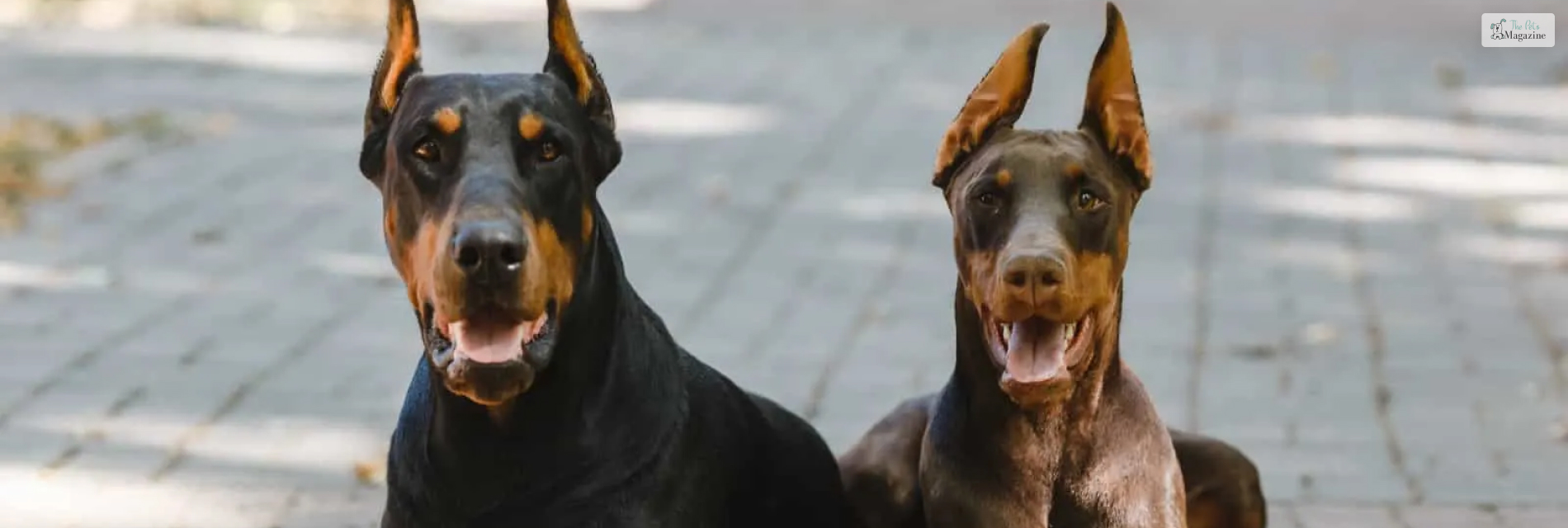
Karl Friedrich Louis Dobermann’s breeding led to these truly amazing creatures that we know today. Named after its breeder, the Doberman is a combination of great looks, a strong build, and a powerful presence.
Today we present to you, in this article, a comprehensive set of information about both the American and European Doberman for you to know them better. If you are a dog lover, we have all the information you need to take one of these beauties home.
History And Origin of Doberman
The history and origin of European Doberman is quite fascinating, and it is rooted in 19th-century Germany. As you may already know, the Doberman owes its existence to a German tax collector named Karl Friedrich Louis Dobermann, who lived in Thuringia during the 1880s. His job, along with managing a dog pound, exposed him to a variety of breeds. Dobermann envisioned a loyal and courageous canine companion to assist him on his rounds. This sparked his idea to develop a new breed.
Dobermann then embarked on a selective breeding program, crossing various dog types. The exact breeds remain debatable, but some possibilities include German Pinschers, Rottweilers, Manchester Terriers, and Beaucerons. His focus was on creating a dog with intelligence, strength, stamina, and a protective instinct.
The resulting dogs were initially known as “Dobermann’s dogs” and were used for various tasks like guarding property, herding livestock, and even assisting police and military. Following Dobermann’s death in 1894, enthusiasts like Otto Göller continued refining the breed. The Doberman Pinscher Club was established in Germany by the late 1890s, and the breed gained official recognition shortly after.
The European Doberman’s reputation for qualities like intelligence, loyalty, and courage preceded it across the Atlantic. By the early 1900s, American dog enthusiasts were taking quite an active notice of the breed. However, there isnt a specific date pinpointing when the first Doberman Pinscher arrived in America.
All we know is that the American Kennel Club officially recognized the Doberman Pinscher dog breed in 1908. This wouldn’t have been possible without the breed being established and popular in America for some time beforehand. This recognition solidified the breed’s status and sparked a surge in popularity.
Dobermans further endeared themselves to Americans during World War I. Their bravery and loyalty in serving alongside soldiers left a lasting impression. Following the war, Dobermans continued to excel in various roles. Their trainability made them well-suited for police and military work. Their guarding instincts also made them popular guard dogs for homes and businesses. At the same time, their intelligence and elegance made them desirable companions for American families.
Key Differences Between The American And The European Doberman
The two Doberman breeds are known to be very similar to each other with little difference. The difference can be noticeable when they are put together and compared.
Here are the differences between the two breeds:
Size
In spite of the many differences that are there between the American and the European Doberman (or just Doberman), they are often mistaken to be the same. The Doberman grows to be larger than its American counterpart, with a more muscular build. Doberman is more on the side of working dogs whereas American dobermans are suited to live with a family. They can provide better companionship too.
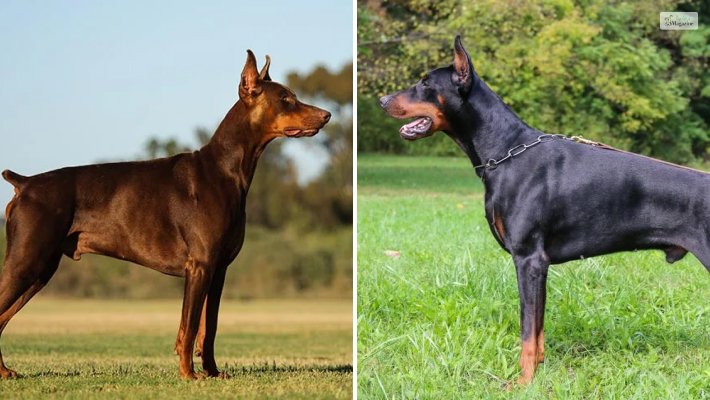
Both the dogs are bred in the region they are named after- namely the American being bred in America and the European Doberman bred exclusively in Europe. The pinscher(American) is an elegant-looking dog with sleek features, and an amiable temperament suitable to be a family dog. The European is a larger and more muscular dog with high energy, suitable to be a working dog.
Although the differences between these two dogs are not apparent physically, there are a few differences that set them apart. On average the Doberman grows a little larger than the American. The latter can reach a height between 24-28 inches tall, whereas the European Doberman can reach up to 25 to 29 inches tall.
The European also weighs 65-105 pounds on average and the American be anything between 60 to 100 pounds, depending on their gender. This difference is very nuanced and can be easily mistaken or go unnoticed at first glance.
Temperament
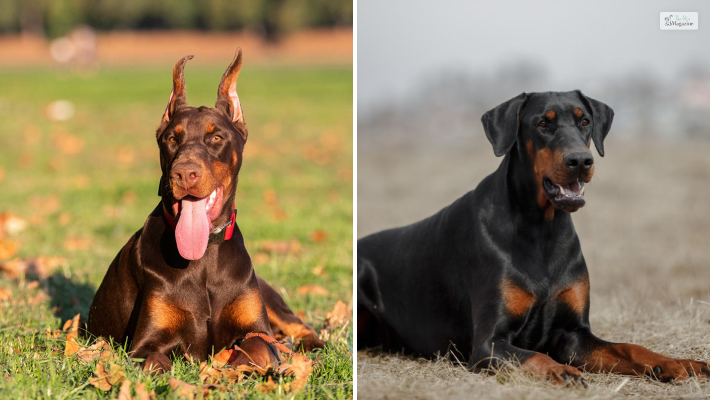
The behavioral pattern too differs in these breeds and very subtly so. The American doberman is a loyal guard dog suited to protect the family and be a great companion in need.
The European however is a working dog suited best for strong and powerful roles. It does not mean that they can be used in roles interchangeably. Given their stature and build, the Europeans are ideally suited for military and police work in comparison to the more gentle and easy-going American Doberman.
Lifespan
Both of the Doberman breeds are descendants of the same lineage so their lifespan does not vary a lot. Being large and hefty dogs, they both live an average of 10-12 years, depending on their general health and breeding history. With a well-balanced diet and regular exercise, both of these breeds can live a long and healthy life.
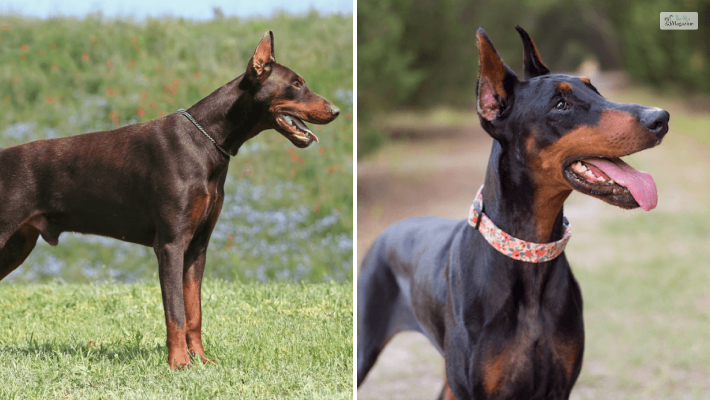
There are six colors known to be prevalent among Dobermans but none of them can be said to be a breed standard color, by kennel clubs around the world.
Color
The differences between these two breeds are fairly unnoticeable but can be observed they are both compared side by side. The most significant difference is the depth of color in the European version whereas the American Doberman has lighter pigment. The deep and dark shade of the American becomes apparent when both are seen together.
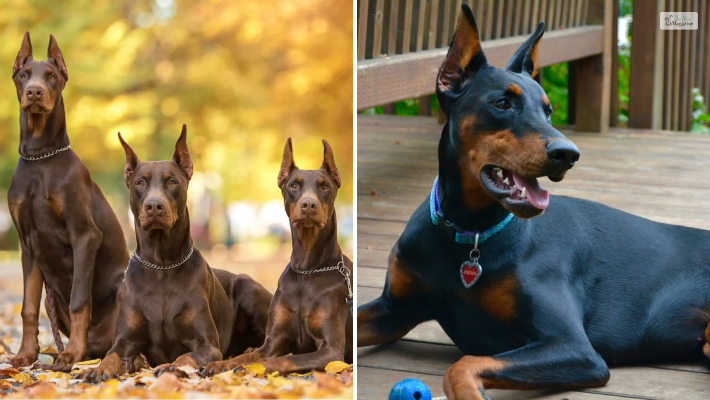
The AKC however recognizes red and rust, black and rust, black and rust, and fawn and rust to be the standard for the American breed. Whereas the European breed is recognized by the Federation Cynologique Internationale to have red and rust and black and rust to be the breed standard.
Training and Exercise Needs
Both European and American Dobermans are intelligent and trainable dogs, but there are some subtle differences in their training and exercise needs. This is mainly because both the dogs were bred for different purposes.
European Dobermans were bred for working tasks. Hence, these dogs typically have higher energy levels and require more exercise, often exceeding an hour a day. On the other hand, American Dobermans, mainly bred to be presented at dog shows, might have lower energy levels. They still require exercise, but an hour or so daily might suffice.
When it comes to training, European Dobermans generally respond well to a firmer and more consistent training approach. Whereas, American Dobermans might be slightly more receptive to positive reinforcement training methods.
However, regardless of origin, both Doberman types benefit from early socialization and consistent training. They also require a lot of mental stimulation alongside physical exercise.
Before You Adopt
You may see commercials and advertisements that read European Doberman puppies for sale or European Doberman puppies for sale but don’t get fooled into thinking that the price point makes all the difference. You must check the breeder information, genetic testing, bloodline, vaccination, and ear cropping.
Quick Bites
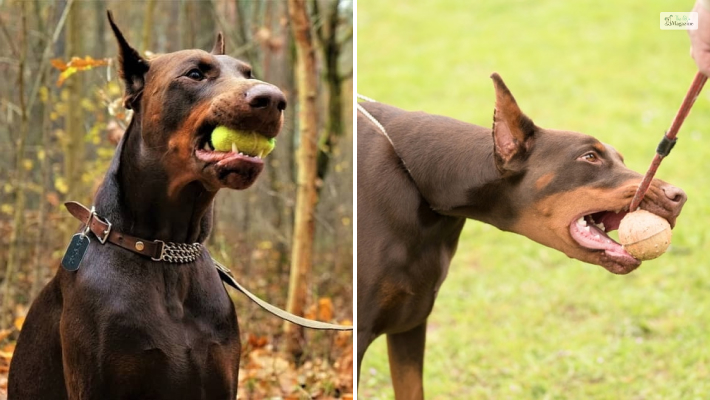
- The Doberman is a loyal, loving dog that can be suitable for both family living as well as a working dog.
- They may react by barking when provoked by strangers, or feel threatened.
- They are in tune with human emotions which makes them very suitable for being around humans for various purposes. They have an innate “pack” instinct.
- Alert and loyal companions who can be both a loving companion and a watchdog as and when necessary.
- Doberman breeders sell “pet quality” and “show quality” breeds, charging more for the latter
- When it comes to European vs American Doberman, both breeds win, because of their sheer gentility, grace, stature, and stamina.
- The German Doberman- a mix of the German shepherd and the Doberman is an intimidating crossbreed that can also be very loyal and affectionate if trained well.
- Havechon is mistyped on Google as Doberman Haversham, with no results to show for it.
In Conclusion
Once you have set the variant of one of these breeds that you want to bring home, the next step is to get to know which breeder has the best puppies for you to choose from. Healthy puppies with a valid certification from reputable breeders can help you choose from a litter that won’t be problematic in the long run.
The more you know about the breed you want to give your love to the better it gets for you. Having thorough background knowledge of your future pet helps you gear up for an experience good for both you and the dog.








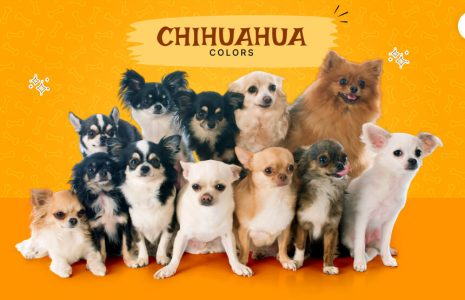
Leave A Comment